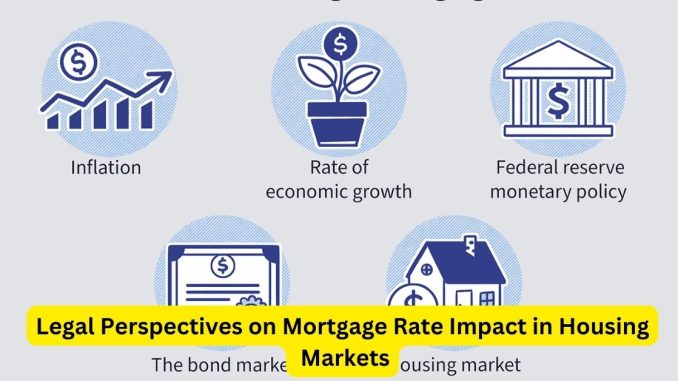
Mortgage rates wield a considerable influence over housing markets, and understanding the legal facets underlying this impact is essential for both industry professionals and homebuyers. Legal frameworks intersect with economic factors to shape how mortgage rates affect the housing sector.
One critical legal aspect involves regulatory policies and their influence on interest rates. Central banks implement monetary policies that directly impact mortgage rates. Legislation, such as the Dodd-Frank Act in the United States, imposed regulations to ensure lending practices align with responsible standards. These regulations indirectly affect mortgage rates by influencing lenders’ risk assessments and lending practices.
Consumer protection laws also intersect with mortgage rates. Legislation often aims to safeguard borrowers against predatory lending practices, ensuring transparency in mortgage agreements and protecting individuals from exploitative interest rates or terms. Compliance with these laws influences how lenders structure mortgage rates and the information they disclose to borrowers.
Legal considerations play a role in the relationship between mortgage rates and housing affordability. High mortgage rates can impact the accessibility of homeownership for certain demographics. Legal frameworks that support affordable housing initiatives or provide assistance to low-income homebuyers can mitigate the adverse effects of high rates on housing affordability.
Additionally, the legal landscape shapes the foreclosure process, which is intricately linked to mortgage rates. Higher rates might lead to an increase in foreclosures if borrowers struggle to make payments. Legal procedures governing foreclosure timelines, rights of borrowers, and lender obligations in the event of default play a crucial role in how mortgage rate changes impact the housing market.
Legal insights also extend to real estate transactions affected by mortgage rate fluctuations. Purchase agreements often contain clauses specifying contingencies related to mortgage financing. Changes in rates might affect the ability of buyers to secure financing, triggering these contingencies and potentially impacting the transaction’s completion.
Moreover, legal frameworks influence the refinancing landscape. Mortgage rate drops often prompt homeowners to refinance existing loans. Understanding legal procedures and potential costs associated with refinancing, such as prepayment penalties or closing costs, is essential for borrowers seeking to take advantage of lower rates.
In conclusion, legal considerations intersect with the impact of mortgage rates on housing markets. Regulatory policies, consumer protection laws, housing affordability initiatives, foreclosure procedures, real estate transactions, and refinancing regulations collectively shape how fluctuations in mortgage rates affect the housing sector. A comprehensive understanding of these legal dynamics is crucial for stakeholders navigating the ever-changing landscape of mortgage rates and housing markets.
Leave a Reply